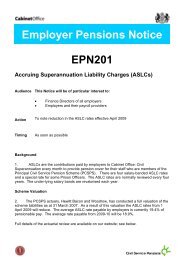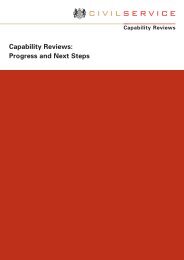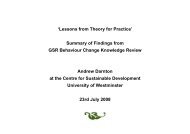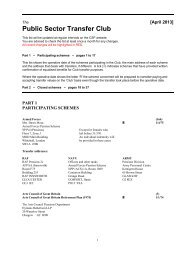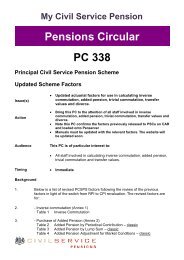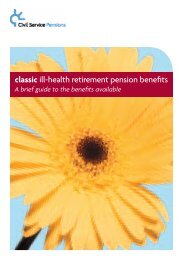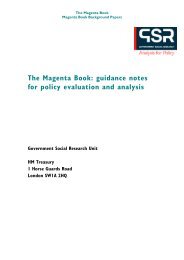Making Car Sharing and Car Clubs Work - Case ... - The Civil Service
Making Car Sharing and Car Clubs Work - Case ... - The Civil Service
Making Car Sharing and Car Clubs Work - Case ... - The Civil Service
You also want an ePaper? Increase the reach of your titles
YUMPU automatically turns print PDFs into web optimized ePapers that Google loves.
MAKING CAR SHARING AND CAR CLUBS WORKCASE STUDY SUMMARIES<strong>and</strong> the gender of car sharers, <strong>and</strong> whether they want to be a driver, passenger or both. <strong>The</strong>database then provides a list of potential car share partners, including work contact details.Individuals are free to select <strong>and</strong> contact the most compatible <strong>and</strong> establish a car sharearrangement. <strong>The</strong> web site <strong>and</strong> supporting literature provide guidelines on car shareetiquette.12.9 Database searches can be confined to those living/working within a specified radius, <strong>and</strong>those with compatible start/finish times. If no appropriate matches are found, the search canbe broadened to a wider geographical area, more flexible start/finish times, or thoseliving/working en route.12.10 Both scheme members interviewed said that they knew their car share partners personallybefore they initiated a sharing arrangement. One went on to comment: “If I didn’t know theperson I’d be sharing with I’d have to insist on a trial period. I don’t think the databaseprovides enough personal information on registered individuals, but I can also appreciatethere are data protection issues at stake here.”Impact <strong>and</strong> Effectiveness12.11 Within a month or so of its establishment in 2002, 140 individuals had registered with thedatabase. A year later this figure had grown to 210, <strong>and</strong> currently st<strong>and</strong>s at 320. <strong>The</strong>re arenow 15 member organisations, representing a total of 30,000 staff <strong>and</strong> students – <strong>and</strong>potential car sharers. Members represent a range of enterprises, although the majority arepublic sector. A ‘parent’ member organisation, e.g. a primary care trust, may have staffdispersed throughout a number of work sites/sub-organisations. Two-thirds of those listed onthe database are SCC employees. However, not all of those listed are currently in car sharearrangements. Craig provided the following figures about active sharers:40 share five days a week15 share between two <strong>and</strong> fours days a weektwo share once a week12.12 However, the figures above are almost certainly an underestimate of the real level of carsharing as they relate only to those registered with the database who have indicated to thesystem administrator that they are actively car sharing. Those who have found car sharepartners outside the system, <strong>and</strong> those who have joined the system but have – for whateverreason – not registered that they are sharing, are omitted from these figures. Craig alsoprovided the following information about the effect on commuter travel patterns among SCCstaff of the introduction of the car share scheme:Final V1.1, Dec. 2004 - 78 -






